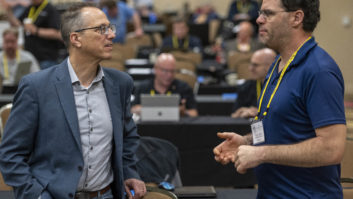

Fig. 1: Labels explain operations. Figs. 1–7 are from WVTF Public Radio and Radio IQ. Fig.2: Here’s a neatly organized and labeled cable distribution system.
WVTF Public Radio and Radio IQ, with stations across central and western Virginia, is celebrating 25 years of public radio service.
Chief Engineer and Engineering Manager Paxton Durham, who has been with WVTF since 1990, shared some facility design thoughts with Workbench readers, as well as pictures of his Roanoke facility.
Like most engineers responsible for facilities with both paid and volunteer staffs, Paxton is a big believer in labeling. In a number of applications, he uses the label to explain, as seen in Fig. 1.


Fig. 3: Computers are located on sturdy chrome wire shelving. Fig. 4: Smaller shelves under the computers hold wiring.
“Not everyone is all that technical,” he says. By using labels not only to identify equipment but also to explain how it operates, procedural problems are reduced.
Paxton has used labels liberally throughout the facility: Even the 75-ohm cable feed distribution can be followed, as shown in Fig. 2.
Most facilities depend on computers; WVTF is no different. By locating all computers in a single IT room, the environment can be controlled easily. By selecting heavy-duty industrial shelving, as seen in Fig. 3, all computers can be stacked.

Fig. 5: Spot lamps illuminate equipment.

Fig. 6: Stanchions are used to keep visitors at arm’s length from the equipment. The chrome wire shelving can be assembled without tools, and the shelves can be adjusted in one-inch increments. The open wire construction reduces dust accumulation, too. Visit the Radio World Links page, radioworld.com/links, for information on one supplier of this type of chrome wire shelving.
The modularity of this type of shelving means that a connector shelf can be installed beneath the computers, as seen in Fig. 4.In this way, access to connectors and associated wiring is from the front — no more crawling around behind the computer.
In the rack area, adjustable ceiling spotlights illuminate the equipment and are aesthetically pleasing, as in Fig. 5. Rack mount equipment faces one of the hallways. The black stanchions, Fig. 6, can be spread out to keep visitors away from the rack equipment. Simple, yet effective.
Paxton takes advantage of cordless phone technology, too. By locating an extension in the racks (Fig. 7), troubleshooting comes easy.
Cox Media Richmond DOE Dennis Sloatman is another believer in clean facility layout. Fig. 8 shows the Main Distribution Frame at the Richmond, Va., cluster. Taking the time to do it right has a major payoff as the facility changes or grows.


Fig. 7: A cordless telephone makes troubleshooting easier. Fig 8: A neatly designed and completed Main Distribution Frame at Cox Media in Richmond, Va.

Fig. 9: A site manager could spend his career managing this site. If Paxton and Dennis want an engineering challenge, they could spend the rest of their careers managing coax runs at the tower site shown in Fig. 9. What’s interesting is that you can see the curved cable tray, with coaxial lines neatly in place. At some point, mayhem took over …
Contribute to Workbench. You’ll help your fellow engineers and qualify for SBE recertification credit. Send Workbench tips to [email protected] or fax to (603) 472-4944.
Author John Bisset has spent 43 years in the broadcasting industry and is still learning. He is SBE certified and is a past recipient of the SBE’s Educator of the Year Award. He works for transmitter company Elenos.











